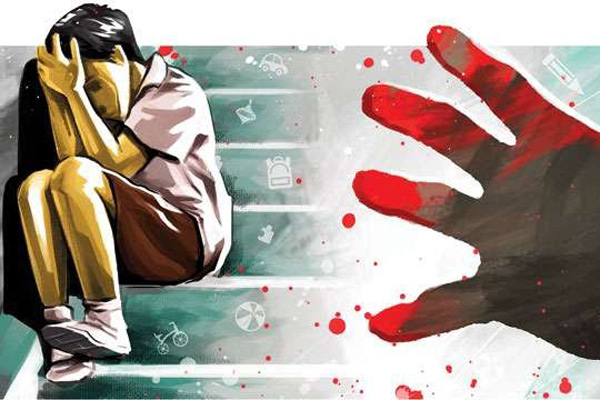This article is written by Shivani Nair, from Manipal University Jaipur. This is an exhaustive article which deals with the topic of Analysis of the POCSO Amendment Bill, 2019 where the complete analysis of the bill would be mentioned in the article.
Table of Contents
Introduction
The Parliament had passed the Protection of Children from Sexual Offences (Amendment) Bill, 2019 with the Lok Sabha having approved it unanimously wherein the Rajya Sabha had already passed the bill. This bill sought to enhance the penal provisions related to sexual offences against children, with the addition of the death penalty in the provisions of the Act. It also seeks to protect children from offences other than the sexual assault, including, sexual harassment and also, pornography related to children. The bill introduces new offences such as it specifically defines “child pornography” and also, widened the scope of “aggravated sexual assault.”
The offences and their current punishments
There are a few offences whose meanings and punishments shall be discussed below-
- Penetrative sexual assault: This means, by the virtue of the act, any person commits “penetrative sexual assault” if he-
- Puts or penetrates his penis into the vagina, the mouth of the child, the urethra of the child or the anus of the child, or,
- Makes the child do all of the above things that have been mentioned, or,
- Inserts any sort of object into any part of the body of the child, or,
- Applies or places or puts his mouth or tongue in any part of the body of the child.
The punishment for the offence before the amendment was a minimum seven years of imprisonment which may extend to life imprisonment along with fine. The bill, however, increased the punishment from a minimum of seven years to a minimum of ten years which may extend to life imprisonment along with fine. Furthermore, the bill had stated that if a person commits the sexual offence of penetrative assault, against someone who is a minor, below the age of sixteen years, shall be punished with imprisonment whose minimum punishment would be twenty years and could go up to life imprisonment with fine.
- Aggravated penetrative sexual assault: The POCSO Act defines certain acts committed by the offender as “aggravated penetrative sexual assault”. These acts are the gruesome acts that involve a police officer, a member of the armed forces of India or any other public servant of the government body. When any of these persons commit a sexual offence against a child that is penetrative in nature, it would be termed as “aggravated penetrative sexual offence”. However, this does not only limit itself to the child. It also involves the cases where the relative of the child is also involved in the commission of the offence. Additionally, it also covers the areas, where the sexual organs of the child get injured by the fact that an assault was committed against him or her, and also includes the case where the child becomes pregnant after the assault committed against her. This bill has added two more grounds to this definition of aggravated penetrative sexual assault by increasing its ambit and scope by covering other aspects of the law. These are:
- A sexual assault that results in the death of the child.
- An assault committed during natural calamity.
The punishment for aggravated penetrative sexual assault before the bill had passed, was a minimum of ten years that would extend up to imprisonment for life. The bill, however, has increased the punishment for the assault from a minimum of 20 years which may extend up to the death penalty for the accused.
- Aggravated sexual assault- by the virtue of this act, the term “sexual assault” covers the ambit of such actions that include the offender touching the breast, vagina, anus and penis of the child with the intention of sexual assault without penetration. This term, “aggravated sexual assault” additionally includes cases where the relative of the child is also an offender. Also, it includes such cases where the child receives injuries due to sexual assault. The other aspects that the bill covers through the amendment are:
- An assault committed against the child during the course of natural calamity
- Inserting or administering any sort of hormone or injecting any chemical substance into the child so that the child can attain early sexual maturity.
- Pornographic purposes– The act had previously stated that no person can use the child for any sort of pornographic purposes. The person shall be held guilty if he uses the child for such a purpose with the intent to produce any form of media for the purpose of sexual gratification or pleasure. This act also penalises the offender for using such media resulting in their sexual assault. The bill, however, makes changes in the punishments for the offences, from what it previously was in various forms of pornography. These are:
- The punishment for the use of children for pornographic purposes earlier was a maximum period of five years. Now, with the bill, it has been increased to a minimum period of five years and the maximum period is upon the discretion of the court.
- The punishment for the use of children for the purpose of pornography which results in the children facing penetrative sexual assault was initially a period of ten years which may extend to imprisonment for life. After the bill, though, no changes have been made in this aspect of the law. It is still the same.
- The punishment for the use of children for the purpose of pornography which results in these children facing aggravated penetrative sexual assault was initially a maximum period of life imprisonment with no minimum period. Now, after the bill, the minimum period has been determined as twenty years and the maximum period remains imprisonment for life or may even extend to death in certain cases.
- The punishment for the use of children for the purpose of pornography in the case of the children facing sexual assault was initially a minimum period of six years which would extend up to a maximum period of eight years. Now, however, the punishment for this has been reduced to some extent making ita minimum period of three years which may extend up to five years.
- The punishment for the use of children for the purpose of pornography which results in these children facing aggravated sexual assault was initially a minimum period of eight years which may extend up to ten years. After the introduction of the bill, this has changed and has reduced to some extent resulting in the minimum period of punishment to be imprisonment to be five years and the maximum period to be seven years.
- Storage of pornographic material- The act provided punishment for the storage of the pornographic material for the use of commercial purpose which may be for a minimum period as decided by the court of law, which may extend up to a period of three years, or with fine or both. However, the bill, in this case, increases the punishment to a minimum period of three years which may extend up to five years or with fine, or both. In addition to this, the bill includes two more offences, in the ambit of storage or pornographic materials which involve children. These are:
- Failure of destruction, deletion, reporting of the pornographic materials which involve children.
- Transmission, administration or propagation of any such material except for the purpose of reporting it.
Significance of the bill
The significance of the bill is such that, it creates the following impacts upon the potential child predators or even the offenders who have committed gruesome acts against children:
- This amendment has been expected to discourage the trend of sexual abuse against the children by acting as a deterrent due to the inculcation of significantly strong penal provisions against the offender as mentioned in the act.
- It has intended to protect the children who are at a very vulnerable position and save them from the distress caused to them and ensure their safety and well-being while maintaining their dignity.
- This amendment has aimed to establish clarity on the aspects such as the abuse of children and their punishments thereof. It also widens the range of the offences and includes punishments for offences which had not previously been stated clearly.
- The important part of this bill is that it is gender-neutral and creates no discrimination against children belonging to any gender be it cis male, cis female, trans male, trans female, or any other gender.
- This bill seeks the death penalty in the case of aggravated penetrative sexual assault which is intended to cause a deterrent effect in our society and refrain people from committing such an act, in the future.
Concerns related to the death penalty
Even though it would act as a deterrent to the general public, there are a few concerns that could arise, if the clause of the death penalty is implemented into the act. These are:
- More often than not, the perpetrators who commit the abuse, are generally the members of the family which may include distant relatives as well. Having such a penalty, in such a case, may discourage the other family members to have a case registered against the members of the family who are the offenders as well.
- It may act as a life-threatening agent for the minor, as the punishment for the offence of murder is also a death penalty and in such a case, the chances of the child being murdered after having been assaulted may come into the picture.
- The Justice J. S. Verma Committee, which had been constituted in the year 2013, after the Nirbhaya case, after deliberating upon the topic had found that the imposition of the death penalty would not be appropriate and had itself contented against the imposition of the death penalty in the case of rape.
- The 262nd report of the Law Commission of India also provides for the abolition of the death penalty in all sorts of cases except terrorism.
- It has diverted the issue from the most important topic that one would argue, and that would be the delay in the conduction of the trials, the infrastructural apathy, and the procedural lapses which completely and smoothly evades the fact that “it is the certainty of the punishment rather than its severity which ahs the deterrence in the actual sense.”
- Research which has been conducted at a global level has shown that despite having capital punishments or even stringent punishments, there has been no substantial fall in the commission of these horrific and gruesome crimes, thus, portraying the limitation of such a theory of deterrence.
- The report stated by the National Crime Records Bureau in the year 2016, had stated that the rate of conviction in the POCSO cases was as low as 29.6% while the rate of the pendency in such cases was as high as 89%. The period of completion of the trial in two months is hardly complied with.
- By the report of the NCBR in the year 2016, it has been mentioned that the rate of the case that came up before the court was even less than 3% of the actual number of child rape cases that have been registered, that ended up in conviction.
Implementation of the bill
There are a few changes that need to be made in order for the implementation of the act to take place. These are:
- There has been a lack of courts and even lack of the investigation in such cases along with poor management. Such issues should be resolved immediately with effect.
- The direction of the Supreme Court to set up courts which are fast trial in such cases where the order must be given within 60 days if there are more than 100 cases pending, must be complied with immediately.
- The provision of the death penalty must be widely discussed and used only in the cases where it requires for them to be used in the rarest of the rare cases.
- Awareness and educating the people with its sensitisation is the key and a tool that could prevent the crime itself.
Conclusion
The priority of the Court and the government is always that of delivering justice to the victim. Through this amendment bill, there have been ways in which the provisions of deterrence have been added to prevent the crime. However, certain punishments have to be looked over again. The setting up of fast track courts and the guidelines as mentioned in the article is an important step that has to be taken up.
References
- http://newsonair.nic.in/Main-News-Details.aspx?id=369465http://newsonair.nic.in/Main-News-Details.aspx?id=369465
- https://www.prsindia.org/billtrack/protection-children-sexual-offences-amendment-bill-2019
- https://www.drishtiias.com/daily-updates/daily-news-editorials/protection-of-children-from-sexual-offences-amendment-bill-2019-and-related-concerns
LawSikho has created a telegram group for exchanging legal knowledge, referrals and various opportunities. You can click on this link and join:











